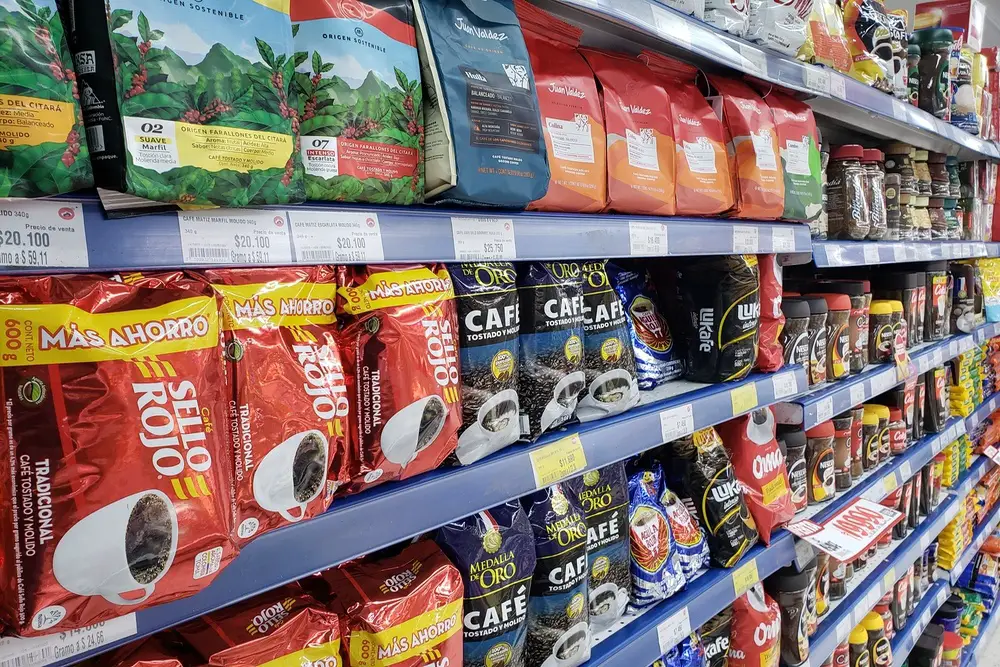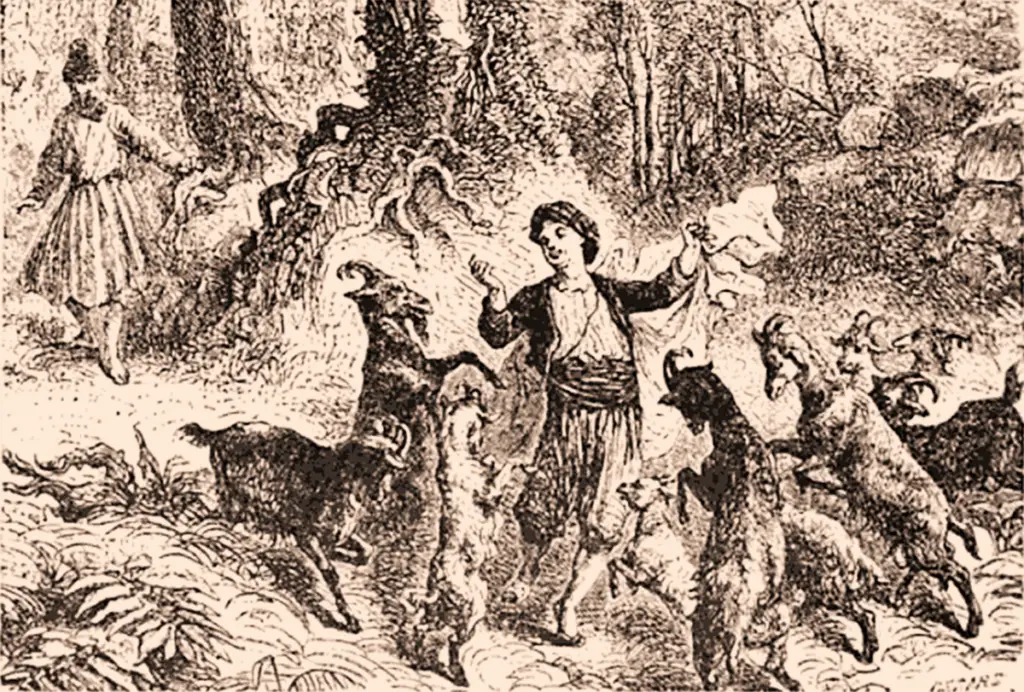If you’ve heard the term “Third Wave Coffee,” you’ve probably deduced that there must also be a first and second wave.
Historically, coffee was first known as an edible bean. One of the most famous stories says that goatherds in Ethiopia discovered the coffee bean.
Since then there have been three waves of coffee evolution until today.
Table of Contents
What is a coffee “wave”?
The “Waves of Coffee” are a designation for different historical periods that show the development of coffee consumption. The three coffee waves refer to specific time periods and the way in which coffee was viewed, appreciated, bought and consumed during these periods.
The first and second waves were characterized by a more practical view of coffee, while the third wave aims to celebrate coffee. In addition, each wave creates the conditions for the next.
Before we dive into each wave, it’s worth taking a look at how coffee came to America, because it’s in the United States that the waves originated and matured.
A short history of how coffee came to America
Coffee became popular in Europe in the mid-16th century. At that time there were about 300 coffee houses in London alone, where merchants, intellectuals and artists met.
Coffee reached the American shores at the beginning of the 17th century. However, the Boston Tea Mutiny of 1773 encouraged Americans to switch from tea to coffee. In the mid-19th century, coffee became the drink of choice for western expansion.
If you want to delve deeper into the world history of coffee, you can visit the blog: The History of Coffee and How It Came to Asia, Europe and America.
James Folger began selling coffee to gold miners in San Francisco and perfected the art of buying and selling coffee. He also paved the way for other coffee companies (like Maxwell House and Hills Brothers) to follow the same path with this increasingly popular beverage.
The first wave of coffee
The first wave of coffee began in the 1800s when coffee consumption became widespread. According to some sources, people in the United States were initially unaware that coffee is derived from a plant . Instead, they thought that the coffee was made in factories through various industrial processes.
Coffee’s popularity really took off after the Boston Tea Party in 1773. When the colonists protested the unjust tax on tea levied by the English, drinking coffee became an act of rebellion. However, the actual beginnings of the first wave date back to around 1800.
Most coffee has been prepared at home using tedious and time-consuming methods such as B. by grinding the beans and roasting them in a pan. That changed when the first commercial coffee companies were founded: Folgers and Maxwell House.
These companies sparked the mass consumption of coffee, which was now much more accessible and quicker to prepare. This is how the first wave of coffee began.
This wave marks the point at which coffee became a commodity that was consumed in every household, ie it became a standard product. Coffee was made a commodity suitable for mass consumption.
Innovations of the first wave of coffee
During this time, instant coffee was invented. It was invented by Satori Kato with his special method of dehydrating the water content of coffee. During World War I and World War II, instant coffee was an important part of the soldiers’ daily diet.
It was such an important part of their lives during the war that they created a market for it upon their return. Following this invention, Nestlé’s Nescafé brand of instant coffee was launched.
Another innovation was vacuum packaging, invented by the Hills Brothers Coffee Company in 1900. The vacuum packaging seals the coffee in bags and keeps it fresh for a long time, making it even easier to sell in mass markets.
In addition, there were several inventions in the coffee trade. First, the marketers have been working hard to market coffee as a new trend. Second, the supermarket had a special aisle that sold coffee.
Quantity is not quality
New methods of making coffee and the increasing availability of coffee meant more Americans were drinking coffee than ever before. At that time, however, coffee was not prepared as carefully as it is today. Most coffee was brewed in bulk, and instant coffee was widely available.
The numbers were high, the quality was low. Coffee was something functional, a hot drink, something that kept you awake. During the first coffee wave there was only bitter coffee, which was characterized by its dark color.
Also, the companies involved in the coffee trade were more concerned with profit than the taste of the coffee, and were willing to sacrifice quality if it meant higher profit margins.
Second wave of coffee
In 1966, Peet’s Coffee and Tea opened its first store in Berkeley, California. Starbucks followed in 1971 with its first store in Seattle, Washington. These events marked the beginning of the second wave of coffee.
had become a lifestyle product. Coffee became a drink to be drunk for pleasure and not necessarily to get a caffeine hit.
The desire for an experience has created demand for coffeeshops that focus on eat-in as opposed to take-out coffee. With the emergence of coffee shops, barista became a new professional trend. All baristas were striving to find the new coffee flavor formula.
People were happily willing to pay a little more for a better-tasting cup of coffee while enjoying an atmosphere they didn’t have at home or at work.
But things were about to change again. Some consumers began to complain that while it advertised high-quality coffee, the prices it was charging for the experience and marketing were a major downside. It was time for a change.
Third wave of coffee
In the early years of the 21st century, the public began purchasing their coffee based on origin of production, production methods and ethics of production, and roast levels. This wave comes from a much more sophisticated coffee consumer.
One of the characteristics is that the work behind roasting coffee was really discovered and embraced during this time. There has been a move away from branded coffee chains and a focus on micro-roasting and culinary appreciation of coffee. Third-generation coffee drinkers typically don’t use additives that mask the natural flavor of real coffee.
Consumers in this wave are far more interested in a good cup of coffee that suits diverse tastes and is ethically sourced.
Another distinguishing feature is the degree of roasting. Before the third wave, most coffee companies roasted their coffee between dark and burnt. Third-generation coffee makers have realized that they can taste the beans’ unique characteristics when the coffee is roasted lighter.
Latte art was also developed as a method of serving coffee. The barista draws fresh, frothed milk onto the espresso. You can paint a leaf pattern or a love sign, or even write the customer’s first name.
THE THIRD WAVE coffee axis
More than ever, this consumer seems to value quality and fair treatment of workers from field to cup. The focus is on sustainability and fair trade.
Passion also characterizes the backbone of third wave coffee. From the farm to the roastery and the coffee shop to the consumer, passion should flow into the high-quality coffee at every step.
The growth of organic foods has also been a factor as more people become more concerned about what is in their foods and how it affects their bodies.
Who started the third wave?
The third wave of coffee arose from the desire of connoisseurs, disillusioned with the overemphasis on the coffee experience, who wanted to refocus on real coffee.
The introduction of the third wave of coffee was a collective effort. In the coffee industry, however, Trish Rothgeb is considered the inventor of the term “Third Wave Coffee”.
The wine industry had the greatest impact on the Third Wave. Connoisseurs began to define and describe the unique qualities of certain coffee beans and the factors that affect those qualities along the lines of wine and beer lovers.
Fourth wave of coffee
Some sources indicate that the fourth coffee wave has already begun, while others are still unclear on how to define it, although they agree there are signs of what it might look like.
The fourth wave focused on deepening the coffee process
The fourth wave of coffee explores the foundations of specialty coffee created during the third wave. The process of making coffee has become more and more precise and accurate. The values are weighed, measured and analyzed in order to achieve a result that is as uniform as possible.
This time is about understanding and deepening the properties underlying the coffee process. It is not only about coffee, but also about the characteristics and properties of the chemical composition of, for example, water.
Fourth wave with a focus on the social sphere
Many agree that the next wave will further shift consumer focus towards positive social change. That means they invest in the lives of the people involved in coffee production.
It’s also about making quality coffee beverages accessible to everyone, regardless of socioeconomic status.
Fourth wave focuses on e-commerce
Another possible direction in which the fourth wave could move is related to electronic trading. Just as people have started buying things online, so can they with their coffee.
Customers shopping online can search for product reviews, interact with businesses on social media, and make choices about what to buy.
This is an advantage for independent coffee roasters as they can use the internet to connect with customers and sell their products.
In summary: What is the difference between first, second and third wave coffee?
While the first wave focused on convenience, the second wave saw people looking for specialty coffee drinks that featured a higher roast quality. Third wave coffee is about the coffee itself, not the coffeeshop, not the fancy blends, not the specialty drinks.



